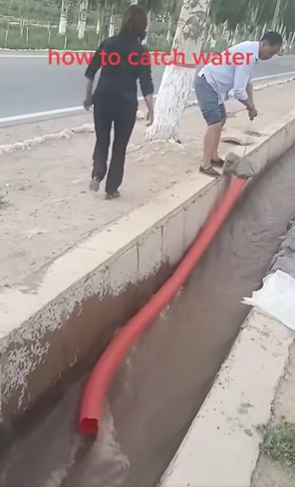
Two individuals begin by placing a flexible red corrugated pipe into a concrete-lined water channel.
The upstream end is bent and partially submerged, aligned with the water flow.
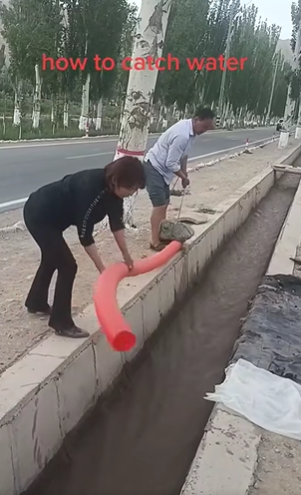
The choice of a flexible pipe makes it easy to position and adjust without needing advanced tools or fittings.
Fully Submerging the Pipe for Suction
As they extend the pipe deeper into the canal, the moving water begins to naturally flow into it due to gravitational pull and water pressure.
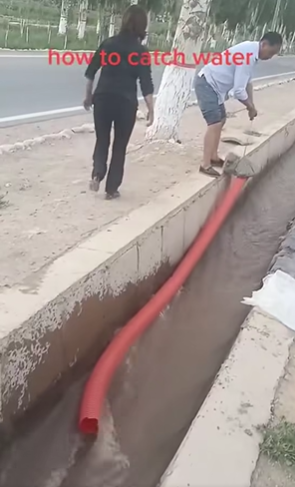
This technique creates a natural siphon effect without the use of a pump or power source—ideal for rural or emergency use.
Anchoring the Intake with Stones
To prevent movement and ensure uninterrupted suction, a stone is strategically placed on top of the submerged pipe opening.
This also helps to prevent debris from easily entering, improving the reliability of the system.
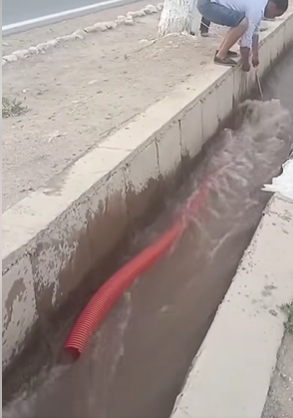
Using Mesh to Secure the Output End
Downstream, the other end of the pipe is fitted with a mesh or cloth filter and held tightly.
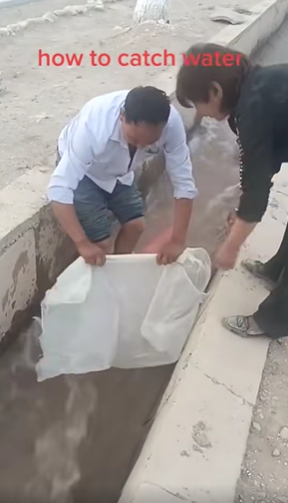
This serves two purposes: helping control the water flow and keeping out insects or unwanted materials—especially useful when the water is intended for irrigation.
Tightening the Filter for Flow Control
The cloth is fastened snugly over the pipe’s mouth to complete the setup.
This moment of teamwork ensures that the pipe will hold its form and flow consistently.
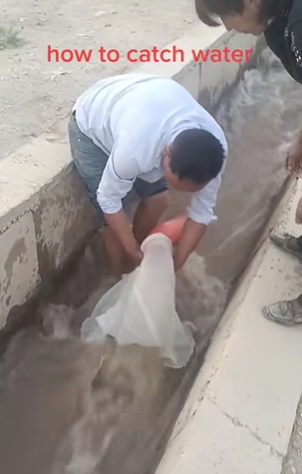
The combination of fabric and pressure helps direct the water more precisely to the intended area.
Redirected Water for Irrigation or Use

The final image shows water gushing out of the pipe at a new location—successfully diverted from the canal to irrigate nearby soil or crops.
This demonstrates a low-cost, DIY solution for water transfer in agricultural or off-grid settings.




